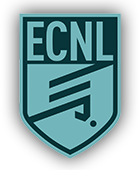ECNL Pre-Season Updates!
Physical and Tactical Periodisation to Maximize Performance
The 2015-16 FC WI Eclipse ECNL Program began pre-season training on Monday, August 3, beginning a 6-week program before ECNL Competition kicks-off on September 13. While a 6-week pre-season is almost unheard of in Wisconsin youth soccer, it is the perfect length of time to safely allow progressive build-up of fitness, sharpness, and team tactical concepts. Periodised correctly, the 6-week schedule maximizes performance of every individual player, and minimizes as much as possible the injury risk inherent in contact sports.
So, what exactly goes on during this period at FC WI Eclipse?
Prior to the first day of training, the ECNL teams' training dates, topics, and physical loads for the entire 6-week period were carefully planned out to insure that the appropriate activities, demands, and information were scheduled for the appropriate days. This means balancing the days of training, the intensity of training, the off / recovery days, and more. Here are some of the philosophical tenets that underline how proper periodisation is done:
- SPECIFIC. Every activity, including physical training, must be soccer-specific! Training fitness in an isolated manner (running without a ball, physical testing) does not appropriately develop soccer fitness (brain and body) of players. In other words, running a fitness test trains you to better run a fitness test - it does not train you to make better decisions, at a higher intensity, on a soccer field!
- VOLUME BEFORE INTENSITY. Begin with building the players' ability to train for 90 minutes before increasing the intensity level of the training. In other words, the body must be able to maintain some level of performance for 90 minutes before improving this level of performance.
- QUALITY OVER QUANTIY. Training "well," with sharp quality, is more important than training in quantity with multiple sessions per day or too many sessions per week. In other words, soccer is an INTENSITY sport - training for shorter periods at speed is more beneficial in development than training extended periods at slow speeds.
- LONG-TERM BUILD-UP. Long-term build-up of fitness creates long-term positive physical adaptations; short-term build-up increases injury risk and also dissipates quickly. In other words, a gradual increase in physical capacity allows the body more time to develop more red blood cells, stronger heart muscles, and become more efficient in processing oxygen - all positive physiological changes for health!
Getting even more specific and practical, the ECNL teams have done a mix of training activities focusing on technical development within the overall program playing style. In our 6-week periodisation, this means fitness training (physical overload training) has been done as follows:
- Week 1-2 Extensive: 11v11 in carefully controlled intervals (building ability to maintain)
- Week 3-4 Extensive / Intensive: 7v7 in carefully controlled intervals (building ability to maintain / building quicker recovery)
- Week 5-6 Intensive: 3v3 in carefully controlled intervals (building quick recovery ability)
For a look at what physical overload training looks like, with older players cheering on the younger players in their final interval of max effort, click here.
During the entire time, future sessions are slightly modified and adjusted based on data and information received on how the players are feeling (soreness, fatigue, etc.) before, during and after sessions through Fit For 90 and heart-rate data.
The Ingredients: The best sessions. The best teachers. The best methodology and monitoring.
The Outcome: Maximized development. Minimized Injury. Highest Quality Training.
How does your club train?



